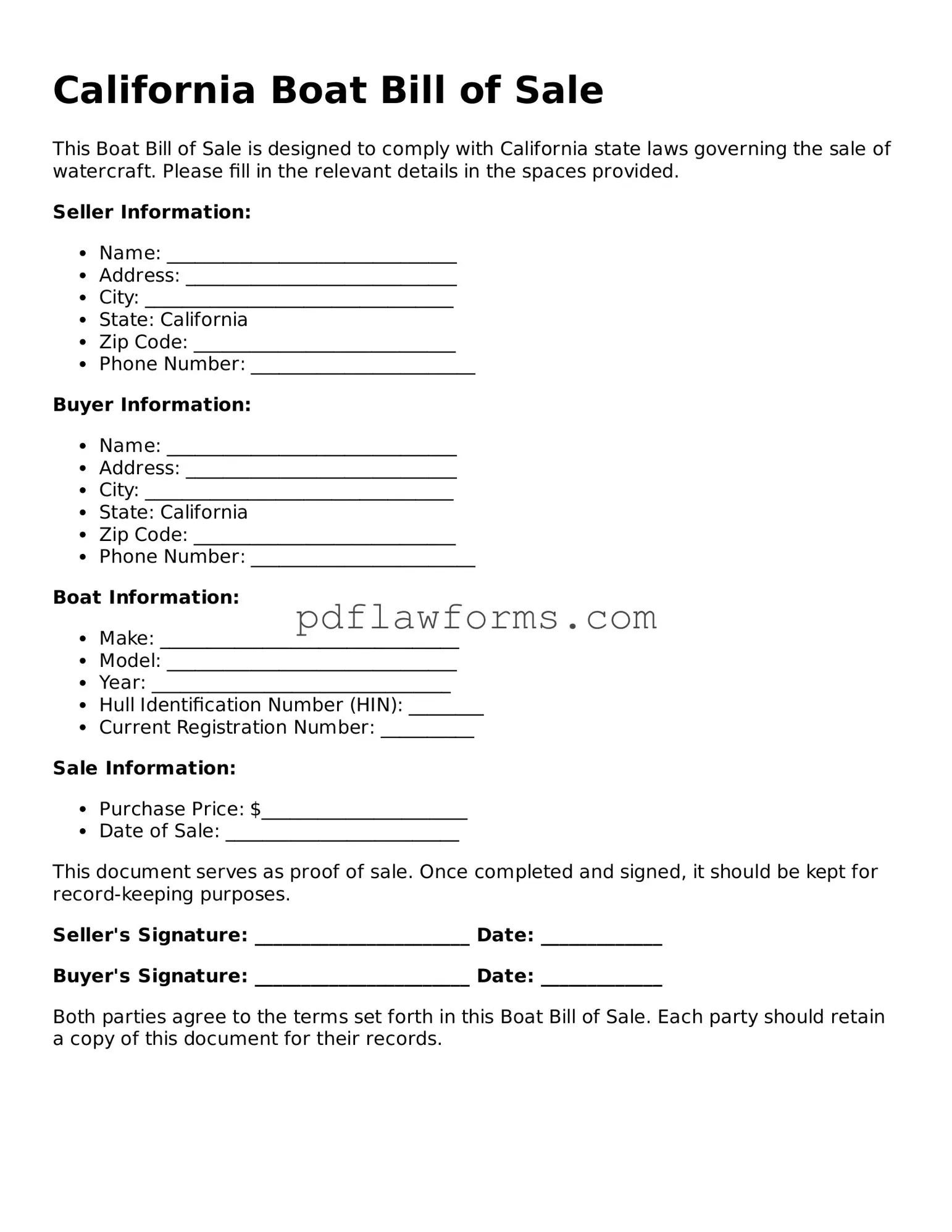When buying or selling a boat in California, a Boat Bill of Sale form is an essential document that facilitates the transfer of ownership. This form serves multiple purposes: it acts as a receipt for the transaction, provides proof of ownership, and includes critical details about the vessel. Key aspects of the form include the names and addresses of both the buyer and seller, a description of the boat (including its make, model, year, and hull identification number), and the sale price. Additionally, the form may require signatures from both parties, ensuring that the transaction is legally binding. Understanding the significance of this document can help streamline the process and protect the interests of everyone involved. Whether you're a seasoned boater or a first-time buyer, having a properly completed Boat Bill of Sale is crucial for a smooth and transparent transaction.
